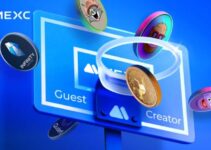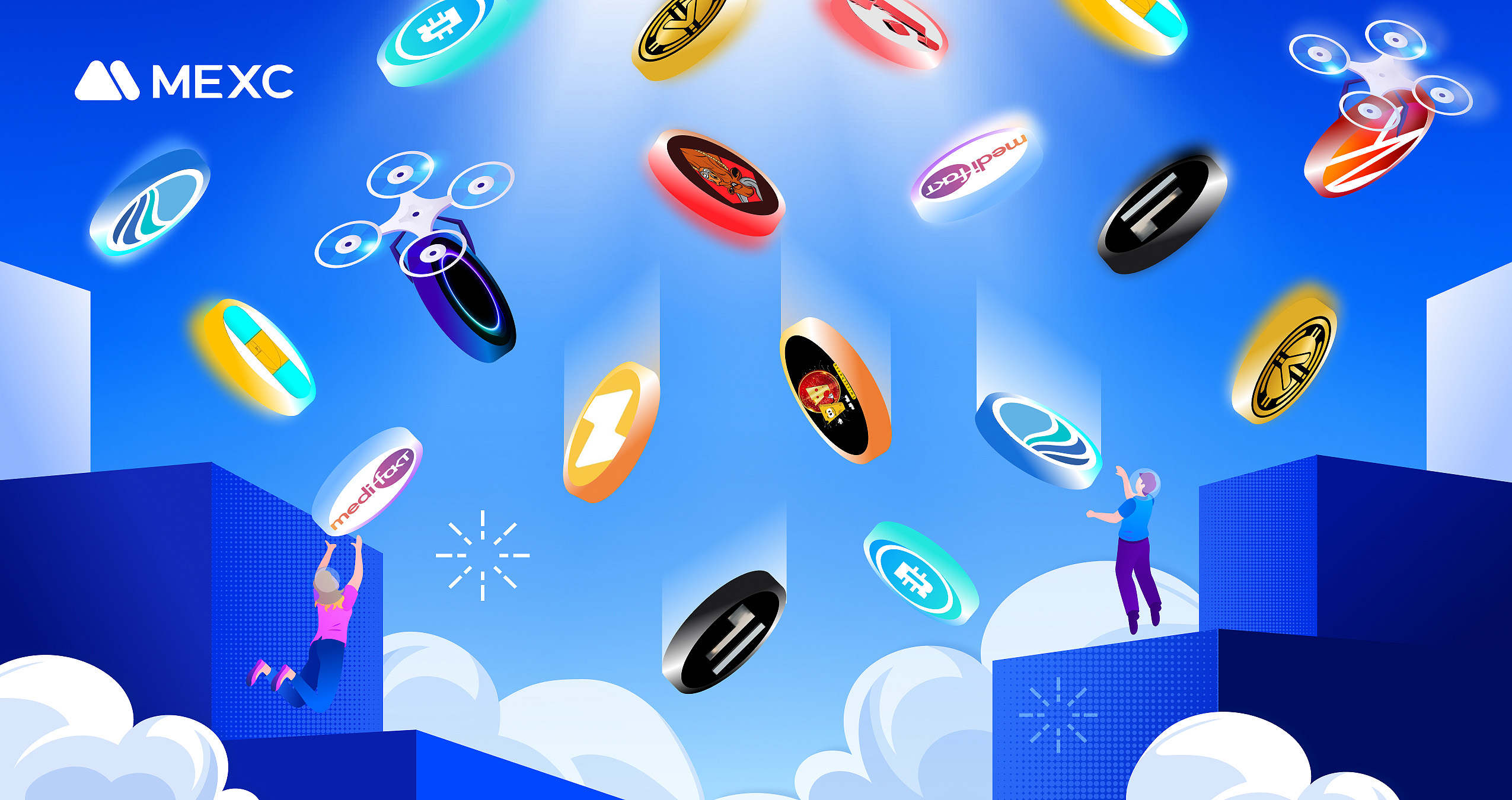
In the complex world of Web3, establishing trust and verifying information remains a significant challenge. While blockchain technology promises transparency and immutability, the fragmentation of data across different chains creates barriers for seamless verification. SIGN Protocol addresses this challenge by creating a universal standard for attestations, enabling users to verify anything across multiple blockchains. As the native token of this innovative ecosystem, $SIGN powers the entire infrastructure, driving a new era of verifiable trust in the digital world.
Key Takeaways
- SIGN Protocol is the world’s first omni-chain attestation solution, enabling users to verify information seamlessly across multiple blockchains including Ethereum, Solana, and TON.
- The ecosystem comprises four major products: EthSign for document signing, TokenTable for token distribution, Schema Registry for standardization, and SignScan for attestation exploration.
- $SIGN serves as the native token powering the ecosystem, facilitating governance participation and network operations while creating alignment between token holders and protocol success.
- SIGN Protocol solves critical blockchain verification problems including trust fragmentation, cross-chain verification barriers, accessibility issues, and document authenticity concerns.
- The protocol’s competitive advantages include comprehensive cross-chain support, proven real-world implementation (with TokenTable handling over $130 million in tokens), flexible storage architecture, built-in legal compliance, and an open protocol philosophy.
What is SIGN Protocol (SIGN)? Understanding EthSign’s Blockchain Solution
SIGN is an omni-chain attestation protocol designed to enable users to freely attest and verify any information on-chain. As the world’s first truly cross-chain attestation solution, SIGN allows individuals and businesses to create secure, verifiable attestations of claims or assertions, establishing a universal standard for digital trust across the Web3 landscape.
$SIGN is the native token of the SIGN Protocol ecosystem, designed to fuel the network’s operations while providing governance rights to holders. It serves as the backbone of the protocol’s economic model, facilitating attestation creation, verification, and protocol governance while enabling a self-sustaining ecosystem.
By combining advanced blockchain technology with innovative verification mechanisms, SIGN Protocol has established itself as a critical infrastructure layer for the future of digital verification, with the $SIGN token as its essential component.
Products Powered by SIGN Protocol and EthSign’s Ecosystem
1. EthSign: Blockchain-Based Document Signing
EthSign brings trust to trustless networks by connecting real-world legal agreements with decentralized identities. It provides the same functionality and user experience as traditional e-signing platforms while enhancing security through blockchain technology. Users can upload documents, create signing fields, customize annotations, invite co-signers, track signing status, and view the entire agreement lifecycle with cryptographic verification.
2. TokenTable: Token Distribution and Management
TokenTable is a suite of on-chain token distribution products designed to streamline token ownership registration and distribution. It includes:
- Airdrop Pro: For large-scale token airdrops, handling claims for over 40 million users across EVM networks, TON, and Solana
- Airdrop Lite: A streamlined version for smaller distributions up to 100,000 users
- Unlocker: Designed for fine-tuned token unlocking with customizable schedules, partial deposits, and unruggable standards
3. Schema Registry: Attestation Standardization
The Schema Registry serves as a central repository for attestation schemas, providing standardized templates for various verification needs. This allows developers to create compatible, composable attestations that work seamlessly across the ecosystem.
4. SignScan: Attestation Explorer and Verification Tool
SignScan enables users to explore and verify attestations through an intuitive interface. It provides both visual exploration for non-programmers and robust REST and GraphQL APIs for developers to query attestation data.
These products form a comprehensive ecosystem that addresses various aspects of digital verification, from document signing to token distribution to standardized attestation frameworks. By offering these specialized tools, SIGN Protocol provides practical solutions for both everyday users and developers building on the platform.

What is the Relationship Between SIGN Protocol and SIGN Token?
Simply put, SIGN Protocol refers to the entire project and platform, including its core technologies for attestations and verification, while $SIGN is the platform’s native cryptocurrency. This relationship mirrors how Ethereum is a blockchain platform and ETH is its native token.
The SIGN Protocol provides the infrastructure and standards for creating verifiable attestations across multiple blockchains, while the $SIGN token powers this ecosystem through various utilities including fee payment, governance participation, and network security. The token ensures that the protocol remains decentralized and self-sustaining, allowing users to benefit from and contribute to the ecosystem’s growth.
What Blockchain Verification Problems Does SIGN Protocol Solve?
Every day, we encounter numerous claims and assertions made by various entities both in the real world and on the web. Traditionally, we’ve had to rely on trust assumptions and centralized authorities to verify these claims, creating inefficiencies and potential points of failure.
SIGN Protocol addresses four fundamental problems in the current verification landscape:
- Trust Fragmentation: The current web relies heavily on trusted third parties to verify information, creating silos of verification that don’t communicate with each other. SIGN creates a unified, cross-chain verification standard that works across all major blockchains.
- Cross-Chain Verification: Before SIGN, data verified on one blockchain remained inaccessible from another blockchain. Even when users held accounts on multiple chains, verification didn’t transfer between them, requiring repetitive processes and creating fragmented identity systems.
- Verification Accessibility: Traditional verification methods often involve complex procedures, making them inaccessible to many users. SIGN simplifies this process, bringing attestation capabilities to everyone with its user-friendly approach.
- Documentation Authenticity: In a digital world plagued by deep fakes and information manipulation, SIGN ensures the authenticity of documents and claims through cryptographic verification that’s permanent and immutable.
The Story and Roadmap Behind EthSign’s SIGN Protocol
SIGN Protocol emerged from the EthSign project, which initially focused on bringing document signing to the blockchain world. Founded by a team of blockchain experts and cryptography specialists, EthSign recognized that traditional e-signing platforms lacked the transparency and security that blockchain technology could provide.
The project began with a simple mission: to provide the same functionality, user experience, and legal validity as Web 2.0 e-signing platforms while leveraging the power of public blockchains to enhance transparency and security. This vision led to the creation of EthSign, allowing users to upload documents, create signing fields, and track the entire agreement lifecycle on the blockchain.
As EthSign gained traction, the team recognized that document signing was just one application of a broader need for verifiable attestations across the blockchain ecosystem. This realization led to the evolution of SIGN Protocol, expanding beyond document signing to create a universal framework for all types of digital verification.
Key milestones in SIGN’s development include:
- The initial launch of EthSign as a blockchain-based document signing platform
- The development of TokenTable for token distribution with verification capabilities
- The expansion into SIGN Protocol to address broader attestation needs across the Web3 ecosystem
- The implementation of cross-chain verification capabilities, supporting Ethereum, Solana, TON, and other major blockchains
The team behind SIGN consists of experts in blockchain technology, cryptography, and security who deeply understand the limitations of traditional verification systems and are dedicated to building a more inclusive decentralized ecosystem. Their vision is to eliminate barriers to trust in the digital world and enable more users to seamlessly verify information across blockchain networks.

Key Features and Advantages of SIGN Protocol’s Blockchain Technology
1. Omni-Chain Attestation Framework
Unlike other verification systems limited to single blockchains, SIGN operates as an omni-chain protocol, enabling attestations across Ethereum, Solana, TON, and other major blockchains. This breakthrough technology allows users to verify information regardless of which blockchain they’re using.
2. Schema Registry System
SIGN’s Schema Registry serves as the blueprint for attestations, allowing users to create standardized formats for verification. This central location stores schemas and provides guidelines on creating new ones, ensuring compatibility and composability across the ecosystem.
3. Hybrid Storage Solutions
SIGN Protocol implements flexible storage solutions for attestations:
- Fully on-chain for maximum security and transparency
- Fully on Arweave for permanent, immutable storage
- Hybrid solutions that combine on-chain verification with off-chain storage
This flexibility allows users to optimize for their specific needs, balancing costs with security requirements.
4. Cross-Chain Verification
Through innovative technology partnerships with trusted execution environments (TEEs), SIGN enables cross-chain attestation verification. This allows attestation data from one blockchain to be verified on another, creating a truly interoperable verification system.
5. Legally Compliant Signatures
SIGN’s EthSign component ensures that digital signatures are legally binding in jurisdictions with technology-neutral laws, including the United States, China, Australia, and others. This compliance makes SIGN suitable for both legal and technical verification needs.
6. User-Friendly Interface
Despite the complex technology behind it, SIGN maintains a commitment to simplicity for end-users. The protocol’s “Keep It Simple, Signer” philosophy ensures that creating and verifying attestations is straightforward and intuitive.
7. Decentralized Architecture
SIGN Protocol operates on a decentralized model that prevents centralized control or manipulation. Through a combination of on-chain verification and decentralized storage, attestations remain secure and immutable.
SIGN Tokenomics
The full tokenomics details for $SIGN haven’t been officially released.
Benefits of SIGN Protocol and SIGN Crypto for Users and Developers
For Individual Users:
- Simplified Verification: SIGN provides a straightforward way to verify information and documents without requiring technical expertise.
- Enhanced Security: Cryptographic signatures and blockchain storage ensure the highest level of security for sensitive documents and attestations.
- Cross-Chain Compatibility: Users can maintain a consistent identity and verification status across multiple blockchains.
- Legal Validity: Documents signed through EthSign maintain legal validity in jurisdictions with technology-neutral laws.
- Self-Sovereign Identity: Users control their own attestations without reliance on centralized authorities.
For Developers and Businesses:
- Standardized Framework: SIGN’s Schema Registry provides a standardized framework for creating and verifying attestations.
- Integration Flexibility: The protocol can be integrated into various applications, from legal document signing to DeFi verification.
- Cost Efficiency: Hybrid storage solutions optimize for cost while maintaining security and transparency.
- Customizable Verification: Businesses can create custom verification processes tailored to their specific needs.
- Regulatory Compliance: SIGN’s legally compliant signatures ensure businesses meet regulatory requirements for digital verification.
For the Broader Ecosystem:
- Enhanced Trust: SIGN creates a foundation of verifiable trust across the Web3 landscape.
- Reduced Friction: Standardized attestations reduce friction in cross-chain interactions and verification.
- Innovation Enablement: By solving the trust problem, SIGN enables new types of decentralized applications and use cases.

The Future of SIGN Protocol and EthSign in the Blockchain Space
Expanding the Attestation Ecosystem
SIGN aims to build a comprehensive attestation ecosystem that coordinates operators, infrastructure, and methodologies to verify the authenticity and integrity of information. This ecosystem will consist of four layers:
- Trust Layer: Societal infrastructures and institutions
- Application Layer: Apps and services using verified trust
- Infrastructure Layer: Processes attestation data for applications
- Attestation Layer: Manages attestations and their elements
Cross-Chain Integration Expansion
The protocol plans to continue expanding its cross-chain capabilities, enabling seamless verification across more blockchains and creating a truly unified verification standard. This expansion will make SIGN attestations universally accessible regardless of which blockchain users prefer.
Enhanced Developer Tools
To foster adoption, SIGN is developing comprehensive toolkits that make it easier for developers to implement attestations in their applications. These tools will include:
- SDK improvements for multiple programming languages
- No-code attestation builders for non-technical users
- Integration templates for common verification use cases
Real-World Use Case Development
SIGN is actively working with partners to implement real-world applications, including:
- Financial credential verification for DeFi protocols
- KYC/AML compliance solutions for regulated businesses
- Academic credential verification systems
- Supply chain attestation frameworks
- Healthcare record verification
Progressive Decentralization
Like many blockchain protocols, SIGN envisions a gradual transition to full community governance, where protocol decisions are made by token holders through transparent governance processes.
With these developments on the horizon, SIGN is positioned to redefine how trust is established and maintained in the digital world, creating a future where verification is seamless, secure, and accessible to all.
Why SIGN Protocol Outperforms Competitors in the Blockchain Verification Market?
1. Comprehensive Cross-Chain Support
Unlike competitors limited to single blockchains or environments, SIGN operates as a truly omni-chain protocol, supporting Ethereum, Solana, TON, and more. This universal approach eliminates the fragmentation that plagues other verification systems.
2. Proven Real-World Implementation
Through products like EthSign and TokenTable, SIGN has demonstrated practical applications in document signing and token distribution. These successful implementations prove the protocol’s capability to solve real business problems:
- EthSign has established itself as a trusted platform for digital document signing with blockchain verification
- TokenTable has facilitated token distribution for major projects, handling over $130 million worth of tokens for more than 30 million users
3. Flexible Storage Architecture
SIGN’s hybrid storage approach allows users to optimize for their specific needs:
- On-chain storage for maximum security
- Arweave integration for permanent, cost-effective storage
- Hybrid solutions balancing efficiency and security
This flexibility outperforms competitors with rigid storage models.
4. Legal Compliance Built-In
Unlike purely technical solutions, SIGN incorporates legal compliance into its design, ensuring signatures are legally binding in jurisdictions with technology-neutral laws. This dual approach to both technical and legal verification creates a more comprehensive solution.
5. Open Protocol Philosophy
SIGN embraces openness as a core principle, making attestation technology accessible to everyone, not just enterprises or exclusive networks. This democratization of verification technology creates a more inclusive ecosystem than closed competitors.
Conclusion
SIGN Protocol is revolutionizing digital trust by establishing a universal standard for attestations across multiple blockchains. As the first truly omni-chain attestation solution, SIGN addresses the critical challenge of verification in today’s fragmented blockchain landscape.
Through products like EthSign and TokenTable, SIGN has already demonstrated real-world utility, facilitating document signing and token distribution for millions of users. These implementations showcase the protocol’s ability to solve genuine business problems while maintaining high security standards.
For investors, $SIGN offers governance participation, ecosystem rewards, and an active role in shaping the future of digital verification. As adoption grows, the utility and demand for $SIGN are positioned to grow alongside the protocol’s expanding ecosystem.
MEXC Exclusive SIGN Airdrop Now Live!
Excited about SIGN? MEXC is hosting an exclusive $SIGN airdrop event with a massive prize pool! For a limited time, complete simple tasks and share in the rewards. Don’t miss this chance to be part of the digital verification revolution. Visit MEXC today and join the SIGN-powered attestation movement!
Join MEXC and Get up to $10,000 Bonus!
Sign Up


